Art Guy | Interview | The New Dimensions | Smokestack Lightnin’
Art Guy was a member of The New Dimensions, Smokestack Lightnin’ and also released a promotional record in 1967 on the Valiant Label.
Sadly the Valiant label hit hard times and the song was never officially released until Hyperloop Records personally tracked down Art Guy.
Where and when did you grow up? Was music a big part of your family life?
Art Guy: I was born in St. Louis Missouri, into a highly educated and very musical family. My father was an MD and my mother a graduate of Julliard and a concert pianist. Both my older sister and brother played the piano as well. From the age of five, my mother attempted to interest me in the piano and classical music by placing me with several nice old lady piano teachers. Unfortunately, whether it was ADD or disinterest, learning scales and elementary note reading would never be my forte.
At the age of ten my family relocated to southern California. I was soon introduced to my California cousins, who owned and operated one of the most innovative and successful recording studios in Hollywood.
My cousin Richie, a classically trained guitarist, studio musician, recording engineer and record producer was one of the best and most successful in town. The studio and my cousin were cranking out one hit after another by some of the most popular recording artists of the day.
When did you begin playing music? What was your first instrument? Who were your major influences?
The first introduction to my cousin’s studio presented itself, when I accompanied my father to the infamous spot in Hollywood. There, I met the likes of drummer Sandy Nelson; whose hits co-written and performed with my cousin Richie included the smash hits; ‘Teen Beat’ and ‘Let There Be Drums’. On another visit, I was introduced to Preston Epps, who was possibly the best bongo player on the planet. His hits included ‘Bongo Rock’ and ‘Bongo Boogie. In subsequent years, Richie would produce some of the biggest acts in rock history, including Three Dog Night, Steppenwolf, Iron Butterfly and Alice Cooper to name just a few. With inspiration gained from my chance encounter with these celebrity percussionists, my interest in music and future endeavors as a musician began to take shape.
Being smitten by the drum bug, I hounded my parents tirelessly, trying my best to weaken their resolve, especially when it came to the concept of their son pounding on calf skins and banging on cymbals with the prospect of making enough racket to wake the dead. In the end (possibly to shut me up and curb my whining), my pleading prevailed. The one pre-requisite inflicted upon me by my parents was the demand that I study with a professional percussion teacher. In a blind stupor, I readily agreed.
My first instrument was a rubber practice pad. With that, a pair of drum stick lessons commenced. Following several months of study and diligent practice, I was rewarded with a snare drum and a hi-hat. Although sparse compared to a full drum set, at least I could make some real noise.
As my lessons and practice continued, I began to accompany the Top 40 hits of the day. With assistance from my teacher, my drum kit expanded. At the ripe old age of twelve, I had my first genuine and complete drum set.
You started your career in The New Dimensions. How did you start working on the material?
At the time, I was attending the local schools in Beverly Hills. To my good fortune, I met and became fast friends with two young students; Michael Lloyd and Jimmy Greenspoon. Michael’s mother was a former Broadway actress. Jimmy’s mom had been a silent film actress. As it turned out many of our parents and relatives were veterans of stage, screen and music. Both my new friends were aspiring musicians, steeped in classical music. Michael and Jimmy had also loved the hits of the day and in particular, a new sound that came to be known as surf music.
Exclusively instrumental at the time, surf music was spawned by the likes of bands such as the Ventures. Their music was made popular by fledgling surfing film producers such as Bruce Brown. Bruce would film his movies with a 16mm camera, rent halls to showcase his films, advertise and sell tickets to the venue. Since the films were silent, Bruce would narrate the story as the film progressed, accompanied by surf music from a record player.
Discovering I was learning the drums, Michael and Jimmy suggested we form a band devoted to surfing and its music. The problem was that Michael and Jimmy both played piano. Since Jimmy was not interested in giving up the ivories, Michael opted to learn the guitar. Jimmy would be one of the first to obtain and perform utilizing a first generation, portable electric piano. After that, between practicing together, surfing which I was introduced to by Michael and Jimmy (already good surfers largely from their forays to Hawaii with their families) and our participation in the earliest form of skateboarding (we became quite proficient at sidewalk surfing), our interest in music soared. We named the band The Dimensions.
Too young to drive and too unsophisticated to do much more than play our instruments, from that day forward, Michael’s mother Suzanne would become our mentor, devoting herself tirelessly to the group, acting as manager, promoter, booking agent, full time driver and chaperone. When the occasion called for it, we would cram all of our instruments and gear into Mrs. Lloyd’s family wagon and off we would go. The wagon subsequently proved worthwhile for other forays as well, carrying our surfboards, on numerous surfing trips to beaches up and down the Southern California coast.
Realizing certain aspects of our sound was lacking, we decided to further expand the band. Shortly thereafter, we were introduced to a young musician who as it turned out played sax. Michael, Jimmy and I had been invited to perform at our school by a man coordinating a school dance.
His L.A. dance studio was devoted to kids and, as a sort of early day mobile DJ, Ted as he was known, would promote his business by originating elementary and middle school dances. Ted’s assistant had a young son, also an aspiring musician. His name was Danny Belsky. Danny’s instrument of choice was the saxophone. Little did we know at the time, we would become the only surf band in town that featured the sax in addition to rockin’ guitar, keyboards and drums.
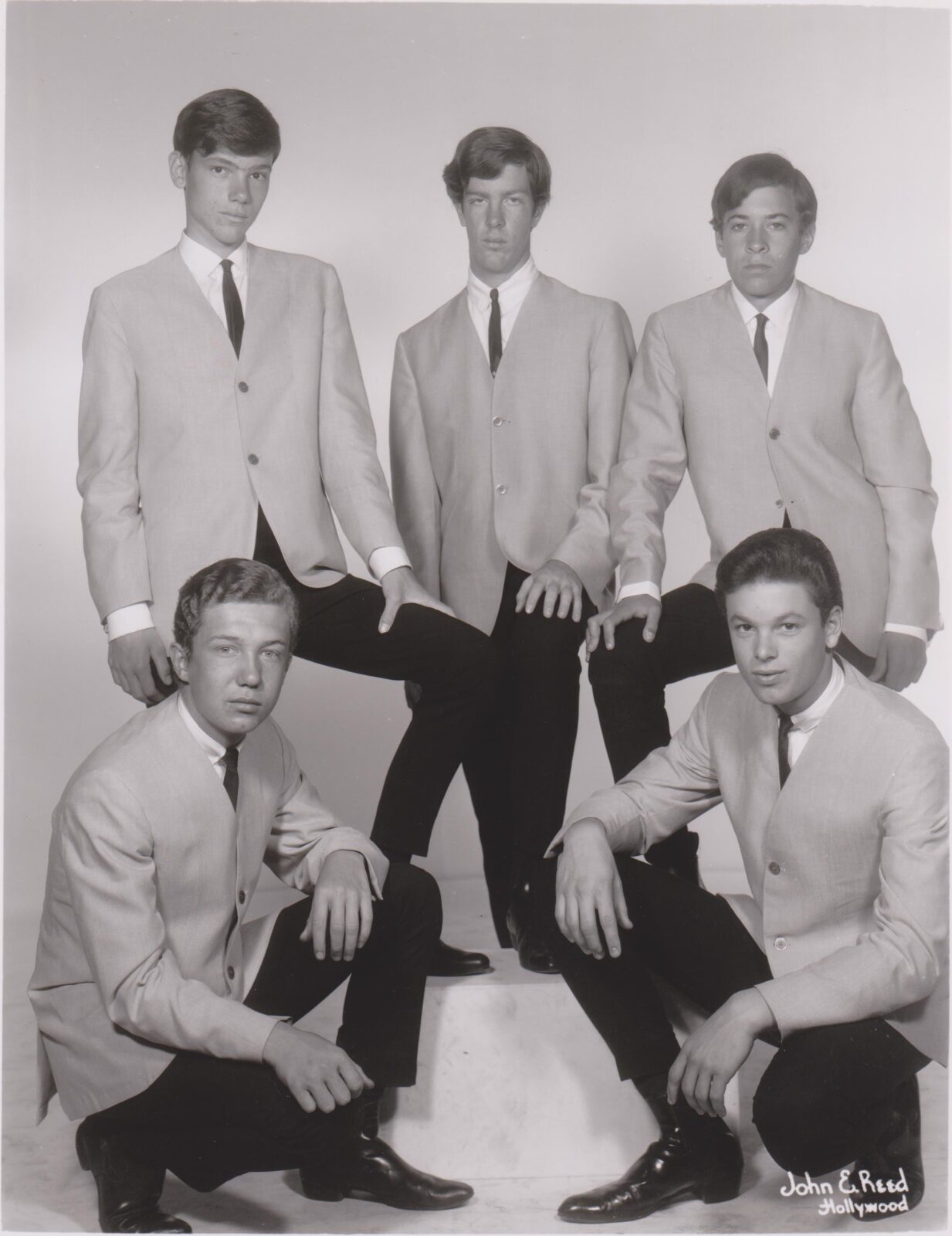
It happened that Danny was with his mom the day of our performance and after being introduced, it wasn’t long before we invited him to become part of the band. After that, our group numbered four. The band practiced tirelessly, making great progress with our music. Yet we remained uncertain we had completely captured the sound.
Soon thereafter, we learned of another young musician named Howard Lane. Howard was a guitar player and at that moment and time had more experience than Michael. Howard fancied himself a lead guitarist. Desiring a fatter, fuller sound, we invited Howard to join the band as lead guitar. Michael would play rhythm. Our band had grown to five. Not long after, Michael’s Godfather; famed entertainer Jimmy Durante presented him with a gift of a Fender electric guitar. This instrument would become the classic, iconic surf guitar of choice for playing surf music. Howard was awestruck. He summed up his feelings by suggesting that since Michael now had the best guitar, he should be the one playing lead. Howard bowed to the guitar gods and relinquished his position.
Our young band marched on, somewhat pleased with the reinforced sound. Slowly but surely we were honing our craft, all the while improving our musicianship. However, with Howard taking a back seat when it came to playing the guitar, it wasn’t long before he realized the handwriting was on the wall. Howard was no longer the lead guitarist, so he decided to leave the band… Luckily for us, this represented only a temporary setback.
In those days, possibly the best known and most successful music store in Hollywood was Wallach’s Music City. Wallach’s was located at the corner of Sunset and Vine in Hollywood. It featured everything from the latest records (and free record listening booths), to the newest stereos, TV’s, sheet music and most importantly for us, musical instruments. The instrument department was a separate in-house entity known as Fife and Nichols. Fife and Nichols offered for sale virtually every instrument and accessory, from guitars to drums, keyboards to horns, drum sticks to guitar strings.
It just so happened that a young high school kid, also a fledgling musician, worked after school behind the counter in the musical instrument department. Slightly older and possibly wiser than us (he had already developed some street smarts), his name was Craig Nuttycombe. Craig’s father and uncle were both L.A. Philharmonic string players, perhaps the best in L.A. They were also in constant demand as studio recording musicians. (It should be noted that in later years, Michael utilized the performances of these two gentlemen repeatedly while producing various artists). Since Michael, Jimmy and I routinely frequented Wallach’s, we came to know Craig on a first name basis. It turned out Craig was an aspiring rhythm guitar player, and to our good fortune not a member of any band. One thing led to another and Craig was invited to join. Once again, we were a band of five.
As good as our sound had become, the one thing missing was a strong bottom end. Craig came to the rescue by suggesting we consider his friend and fellow Hollywood High school student as our new bass player. Shortly thereafter, we were introduced to a young musician by the name of David Doud.
Dave and his brother Michael (also a bass player and guitarist) were the sons of well-known screenwriter Gil Doud. Their dad had developed quite a name and reputation for himself in both feature length motion pictures and television. He was considered one of the best and most prolific screenwriters of his day. The Doud family lived comfortably in the hills of Hollywood. However, life has a way of dealing unexpected blows when least expected. Future tragedy would repeatedly strike the Doud family.
‘Surf’n Bongos (The Great Surfing Rhythms Of The New Dimensions)’ is a truly fantastic release especially for such a young bunch of guys. Tell us how you remember the recording session?
Prior to meeting Dave, his dad Gil suffered a massive, fatal heart attack. The family was devastated and unprepared for what lay ahead. Their father had left no will and it would be up to their mom to sort things out and continue the family unity. Unfortunately, tragedy dealt another blow to the family not more than a year or so later. There are two explanations as to what took place, however I/we in the band are not certain which was the actual incident. The first account was that Dave’s mom was traveling and had been a guest aboard a large yacht. At one point she slipped, fell and hit her head. Apparently suffering only a minor concussion, she quickly recovered. Shortly thereafter, while disembarking a commercial airliner, she suffered a blood clot to the brain and died on the spot. The second account was that she slipped, fell and hit her head while disembarking an airliner and subsequently died as a result.
In either case, the Doud boys were suddenly faced with losing both their father and their mother. The lives of the brothers were thrust into complete turmoil. Initially, their quite elderly grandmother was recruited to move into the family home in order to help care for the boys on a day to day basis. Since Mike was a couple of years older than Dave, it suddenly became his responsibility to help guide his brother’s actions and activities.

Although Dave was recruited to play bass guitar, he unfortunately didn’t own an instrument other than an electric guitar. For the foreseeable future, during the band’s initial recording sessions and public appearances, Dave would subsequently play the bass notes on his guitar.
After Dave joined the band, our hard work, constant rehearsals and performances began to pay off. Not only were we performing on a professional level as young teenagers, but the opportunities and venues improved dramatically. From our beginnings performing in schools and at private parties, we began to secure engagements in much larger venues, culminating in shows such as those as the annual Surf Fair presented at the Santa Monica Civic Auditorium. There, alongside acts like the newly successful and popular Beach Boys, we reached our stride, playing before large crowds of teenagers and young surfers. The reaction to our music was electric and there seemed to be no end in sight to our potential as a future rock entity.
During the same time period, we were approached by two, small town; hot shot record producers. They promised to take the band under their wings, help us create hit records and assist in moving the band to the next level. Inexperienced in the music business, the recording world and the land of promises and contracts, we eagerly agreed. From that day forward, the band would be known as The New Dimensions. We subsequently recorded four albums and several single records in a very short time span. Release on a major label was never secured and although we didn’t realize it at the time, the entire effort seemed to be going nowhere. Eventually, our recordings were released on a minor label, however never promoted.
Eventually, we terminated the relationship with our first producers, opting instead to sign with another we had been introduced to. Hite and Dorinda Morgan owned a successful recording studio. They offered to take the band under their wings and proceeded to work with us, as they had when producing the original Beach Boys recordings. Once again, as fate would have it, we seemed thwarted by the lack of a major label and promotion.

Although the New Dimensions performed at countless venues over the next couple of years, receiving great reaction from thousands of admiring fans, our music careers and the outlook for success were dwindling. The surf sound was abruptly replaced by new vocal sounds introduced by groups like the Beach Boys, Jan and Dean and the Beatles. Although the New Dimensions attempted to join this bandwagon by supplementing our instrumental sound with vocals, we were never able to transition to a vocal group.

Finally, we collectively came to pretty much the same conclusion; it was time to move on. For me, it seemed like a natural progression, although I was more naïve than practical. I didn’t really have any particular path, as I forged ahead on my own. Fortunately, due to my close association with the Morgan’s, they enthusiastically agreed to represent me as a solo artist. Although I was primarily a drummer and not a vocalist, apparently no one seemed to notice or take that fact into consideration.
Hyperloop Records issued ‘Where You Gonna Go’. Would you like to elaborate on the single? Where did you originally record it?
My first solo attempt was actually not solo at all. I reached deep into my bag of tricks and was able to recruit my former bandmate Jimmy Greenspoon for pairing as a duo. Our first collaboration was writing a song called; ‘Funny Feelin’. In addition to penning the tune, Jimmy played keyboards, I played drums and we recruited Danny on sax, Dave on bass and Dave’s brother Michael on lead guitar. Jimmy and I harmonized on the vocal track and the result was rather entertaining.
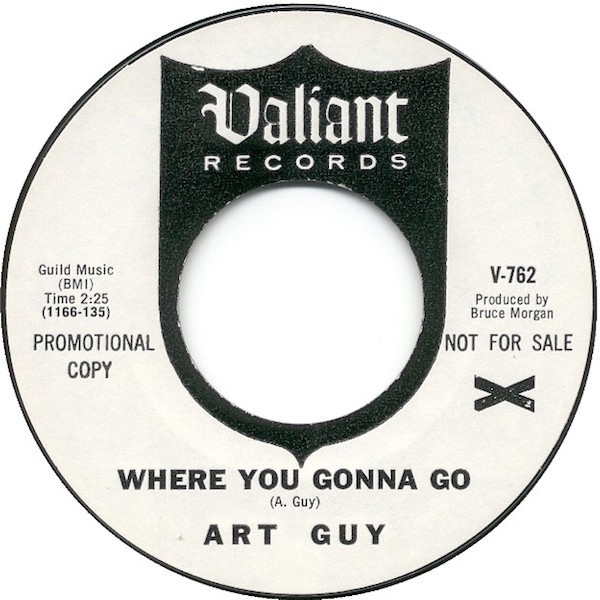
So much so that Original Sound Records, the well-known Oldies label owned by iconic DJ Art Laboe, agreed to release the single. The B side of the record was a syrupy 50’s tune, In addition to playing drums, I sang a solo lead. Needless to say, the record was a bomb.
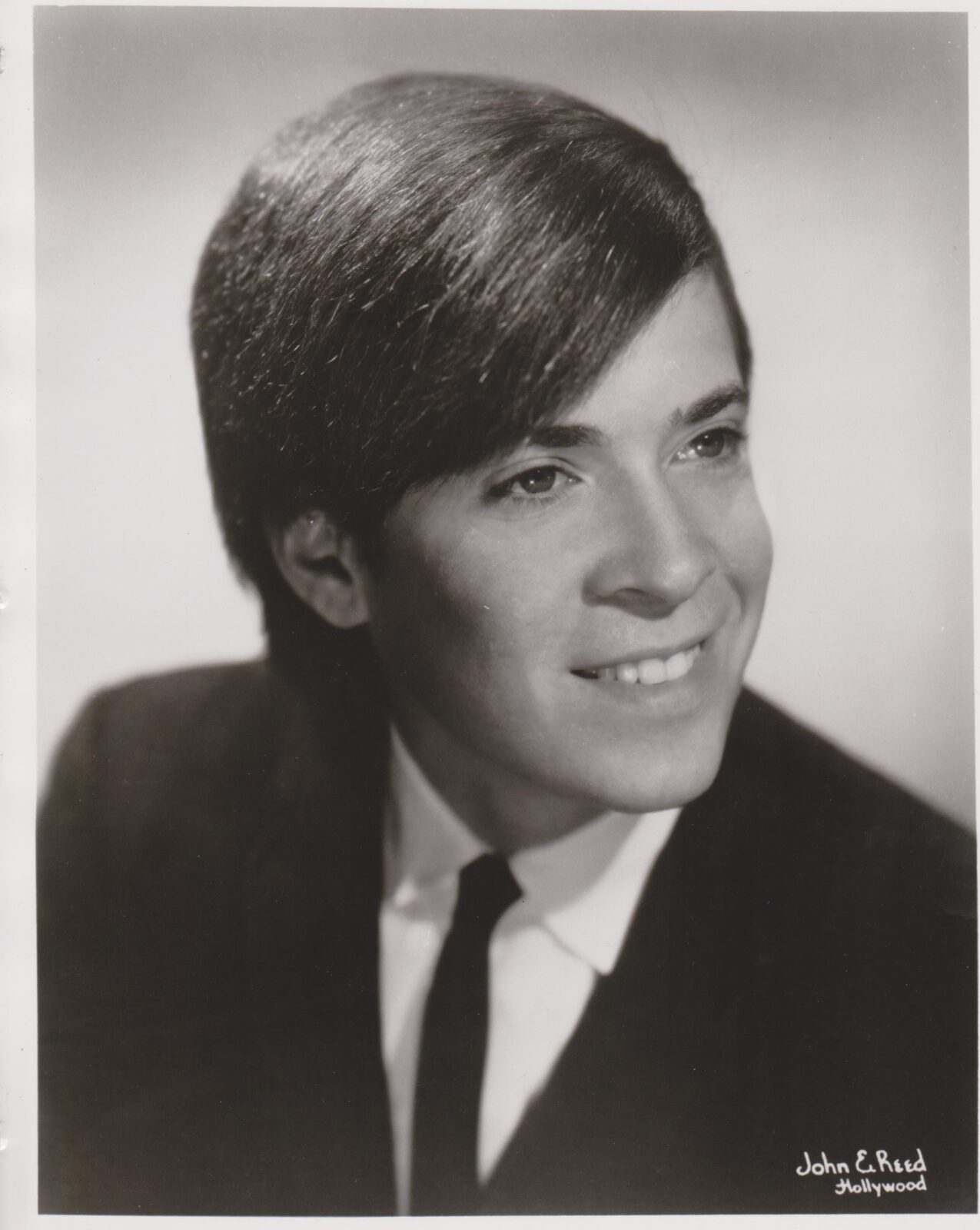
How do you usually approach songwriting?
My next outing was with a song I had composed, played the drums on and sang lead. It was recorded with the help of a group of studio musicians from the hit TV show Shindig. The song titled; ‘Where You Gonna Go’, featured a hard core, up tempo, rock beat with a very unusual instrumental flute solo, performed by none other than my former bandmate Danny Belsky. The sound was infectious. Released from my obligations with Original Sound, I was then signed to an upcoming label known as Valiant Records. The song received a fair amount of airplay, however, not enough to break out. Once again, my recording career faltered. Ironically, over forty years later, thanks to the Internet and YouTube, my recording of ‘Where You Gonna Go’, would be picked up and recorded by numerous punk and rock groups across the U.S. and Europe. It became a signature song for a popular Welsh punk band. The song (including my original recording) has received thousands of hits on the Internet, to rave reviews. As time marched on, so did interest in my recording. One day, I was contacted by UK record label Hyperloop Records. Glyn, the record company head of A and R, asked if I might be interested in a re-release of the tune. After an agreement was struck, the record was released in Europe, the U.S. and other countries across the globe. To my amazement, the recording was reaching a new legion of fans and sales took off. To date, I have been interviewed by numerous publications and featured on many radio and internet stations in multiple countries. The record is about to enter its third pressing. To say I’m honored would be a mild understatement.
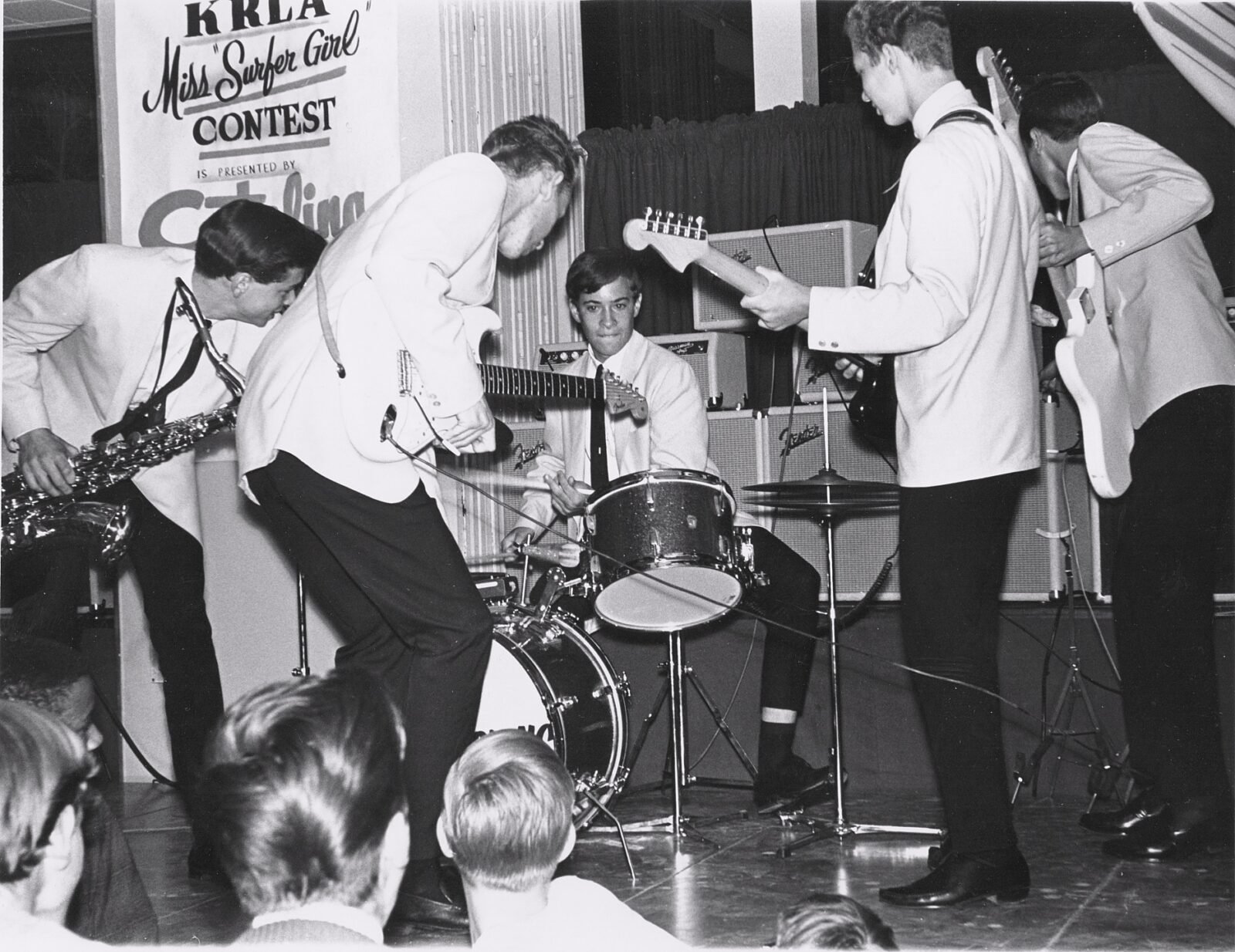
During that same time period, I received a call from an actor friend of mine. He informed me that one of the film studios was holding auditions for the position of drummer in a new band, one that would be featured in a new television series intended to be an American knock off of the Beatles. The show was to be called The Monkees. I phoned the studio and received an appointment to interview for the part. Low and behold, following my first interview, I was called back a second time. At that point I began to have night sweats that I might actually be chosen for the role. Unbeknownst to me at the time, Mickey Dolenz, former child star of the television series Circus Boy had entered the fray and was waiting in the wings. With his professional acting ability, it wasn’t much of a stretch to get the part, especially since studio musicians were to record all the music. The rest as they say is history.
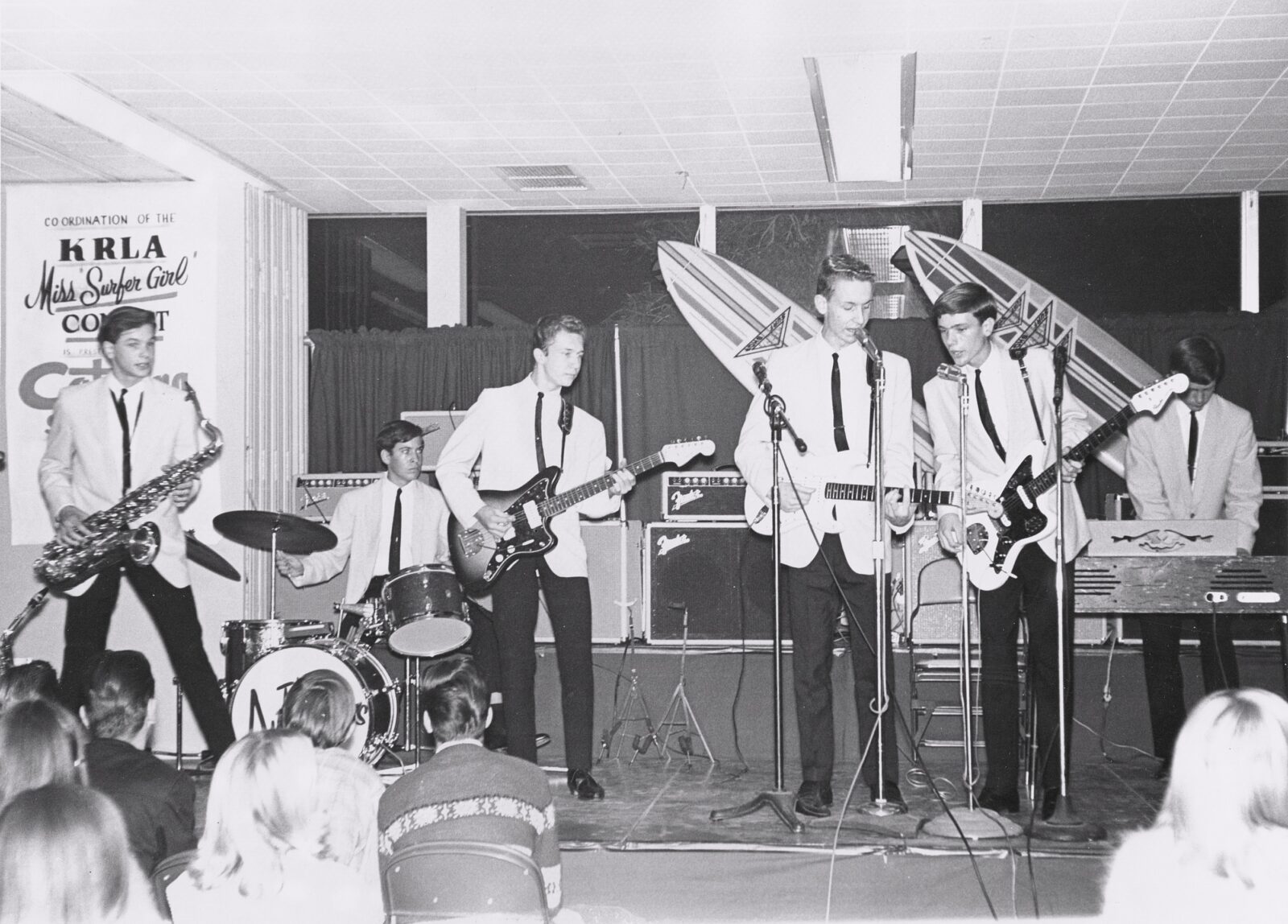
In about 1964, I went to work for Bruce Morgan, the son of Hite and Dorinda, at their recording studio. As an assistant I developed skills in the art, science and nuances of engineering, recording and producing, while addressing the needs of multiple recording artists and music publishing companies. This opportunity enabled me to work with a number of aspiring artists either as producer or engineer. My heart however, was in another place, the world of performing and recording as an artist.
Unemployed as a band member, I received a call one evening at home from musician Arthur Lee. I had been recommended to him as a possible candidate to play drums for his new band to be called; Love. It would require playing at night during the week, a proposition my conservative parents were not about to consent to, especially since I was still in high school at the time. I respectfully declined Arthur’s kind offer, unaware that within a few short months, Love would experience their first Top 10 hit record.
Next, an offer presented itself that seemed tailor made. A Top 40 band called the Minutemen had relocated from Missouri to Hollywood, in search of fame and fortune. Following my audition, I was hired on the spot.
Low and behold, my initial outing with the band was as a house band at a little, but well known club on the Sunset Strip, known as Pandora’s Box. This was the infamous club that would in the future be torn down to make way for street widening and in the process spur the famous riot on the Sunset Strip and the smash single; ‘For What It’s Worth’ by the Buffalo Springfield.
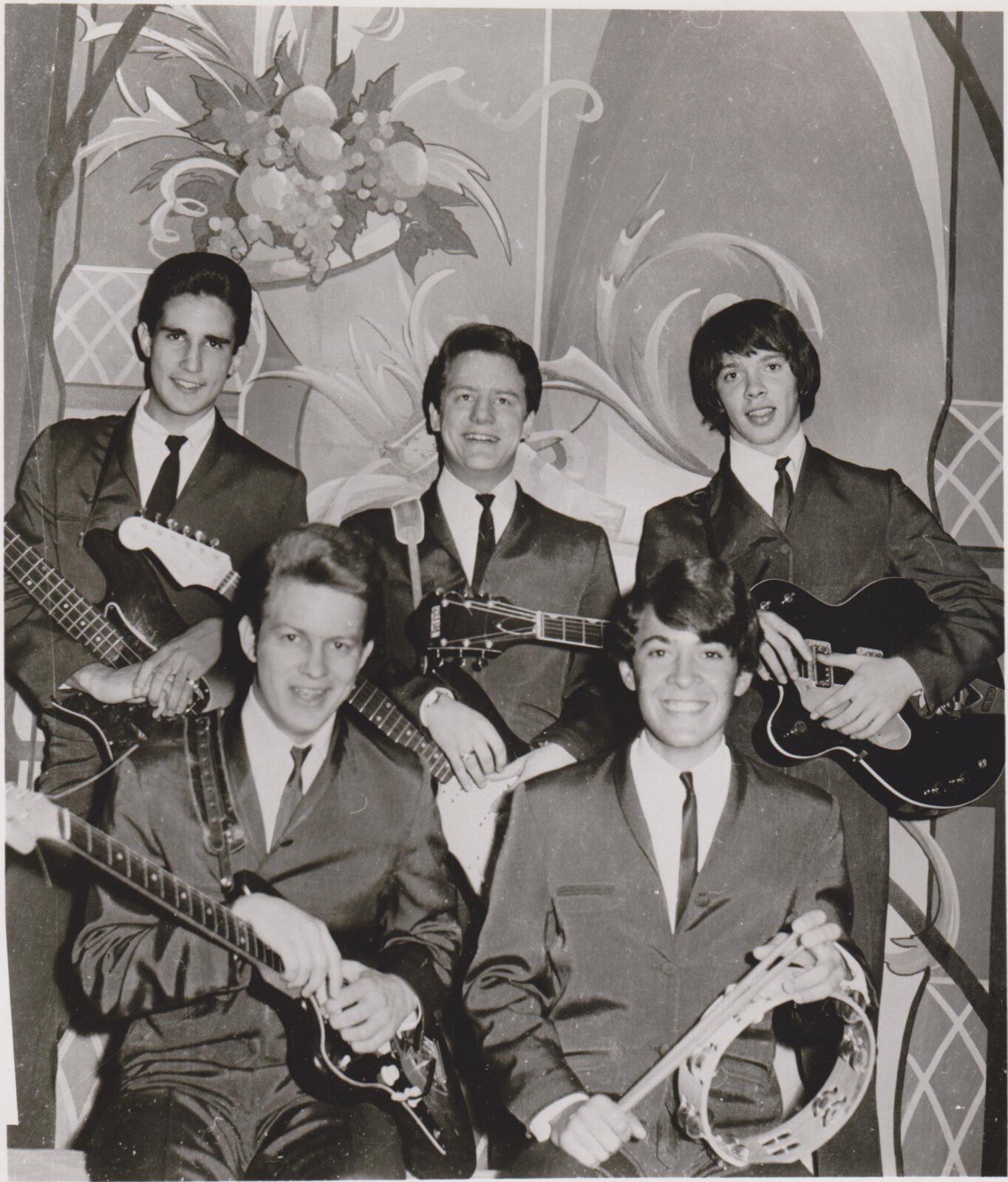
During my stint as a member of the Minutemen, we recorded two singles for an independent label, both which appeared on various local hit record charts around the country, but ultimately failed to rise further. Although the group performed to large crowds in clubs across the country, we just couldn’t connect with a hit record. In 1966, two older members of the band were drafted, forced to participate in the Vietnam War. Subsequently, the band came apart at the seams. It wasn’t long before I morphed into a full blown hippie (complete with wild hair).
The next opportunity presented itself, when I was introduced to a young musician by the name of Jimmy Messina Jimmy was quite the guitar player and singer. He was knocking around Hollywood at the time, working on various projects with the likes of Bob Keane (creator of hits by artists such as Richie Valens and Bobby Fuller) and also working to develop ideas for the producer of the 50’s singing group; The Platters. Jimmy had been hired to back a group of young singers for a several week engagement at Havey’s Hotel and Casino in Lake Tahoe. In need of a drummer, I was invited to join the back-up band. During our engagement, Jimmy proposed I join him in helping form a new band as part of the duo that would later become Loggins and Messina. At the time, I wasn’t interested in becoming part of a back-up band, so I opted out. To my great surprise, Jimmy became a music superstar.
I returned to L.A. and continued my search for another band. I spied an ad from a recording group auditioning for a new drummer. Once again, following my first audition, I was hired. Thereafter, I was signed by Bones Howe, who was considered one of the most successful and prolific Hollywood producers/engineers of all time. Bones was largely responsible for producing the biggest hits by The Association, The Fifth Dimension and The Turtles. Later, he would produce the Elvis Presley; Hawaii comeback special. His countless credits were legendary, engineering and/or producing acts such as The Mama’s and the Papa’s, Jerry Lee Lewis, Sergio Mendes, Juice Newton, The Marketts, The Routers, Barry McGuire, Scott Mc Kenzie and many others, not to mention his tremendous success with the music for major motion pictures such as ‘Back To The Future’.
I’m a huge fan of Smokestack Lightnin’! After releasing several fantastic singles, you recorded ‘Off The Wall’. What do you recall from working on the album?
My new band was known as Smokestack Lightnin’. At the time, the group was signed to White Whale Records whose early success had been with The Turtles. Smokestack began to
develop quite a following in Los Angeles. Favored as one of the house bands at the famed Whiskey A-Go-Go on the Sunset Strip, the band also played other clubs and venues along the Strip prior to becoming affiliated with the famous William Morris Agency and venturing out on tour. We routinely alternated weeks with The Doors at a small club called the Sea Witch. We were co-billed with the biggest rock acts of the day in venues such as the Cheetah Club in Venice, California, other clubs and large auditoriums throughout the state and eventually at numerous concert venues nationally. We shared the bill and/or toured with many of the most successful bands in the country such as The Doors, Three Dog Night, Creedence Clearwater, The Nitty Gritty Dirt Band, The Dave Clark Five, Ritchie Havens, Dion, American Flag and others.

How did you get signed to Bell Records?
After several single releases on the White Whale label, Bones negotiated a recording contract for the band with Bell Records out of New York. Bell was a successful up and coming label with numerous hits already under their belt. Our first project would be an LP. Recorded at the finest state-of-the-art recording studios in L.A. The project would take a number of months to complete. Assisted by members of the famous Wrecking Crew, the results were dramatic. Shortly after the album was released, a giant billboard appeared on the Sunset Strip, touting our new album. The album briefly entered the Billboard charts; however the recording was unable to move into the top selling albums of the day. A number of single releases followed. None were sufficient to garner Top 40 status on a national level however, in many independent radio markets and cities across the country, our recordings did break through the Top 10.
Did you play a lot of gigs with the band? What are some of the most memorable?
By 1970 for me; the handwriting was once again on the wall. At a group meeting, the air was charged with confrontation. Bones wanted the band to move in a more commercial direction prior to recording a second album. The guys in the band insisted upon retaining our original blues/rock sound. After all the ups and downs I had personally experienced in the music business over the years, I was convinced Bones had the right idea. I wanted a Top10 hit more than I valued life itself. The other members of the band were not convinced. In fact, there was even talk of negotiating a release from Bones and seeking another producer, more in line with the band’s vision. At that point, I was at the end of my rope, mentally, emotionally and spiritually. We had aligned ourselves with one of the most successful producers in America and the band wanted out? Hat in hand so to speak, I resigned and departed the meeting. In the end, the group would continue for another six months or so and disband. Happily though, I was socially reunited with my former band mates more than forty years later.
What occupied your life in the 70s and later on?
In subsequent years while living in Oregon, I established a talent agency specialized in placing bands in clubs and hotels throughout the Pacific Northwest. At one point I had as many as twenty bands working between Oregon, Washington, Idaho, Montana, Alaska and California. In the late 70’s, I once again entered the music business as a musician. I formed a group we called Night Life with two other talented musicians and hit the road performing in lounges throughout the Pacific Northwest. Returning to Los Angeles in 1980, it would be more than 10 years prior to working in the music business once again.
In the early 1990’s, while working in real estate, I entered into a professional relationship with two music business veterans; Don Perry and Bob Summer (brother of Mary Ford, the wife of Les Paul). At the time, children’s music had taken off in a big way. We decided to join forces forming a new company. For years, my new music business partners had produced music for television and feature films. They also produced the records for Hap Palmer, one of the most successful children’s educational singers of all time. Over the years Hap had sold millions of albums. We decided our business model would be to develop and produce recordings by various artists geared to the quite lucrative young children’s market.
Over the course of the next couple of years, the three of us worked closely with and produced a number of children’s artists including Hap Palmer, initially releasing their albums on our own label. With the spotlight shining on a surge in children’s music, we were able to negotiate a contract with a major label, in order to release, distribute and promote all of our future recordings on a much larger scale. It was during this period in my music career that we produced legendary folk singer Glenn Yarbrough. In time, our catalog of recordings was licensed by Warner Bros. Records.
As with so many fads and ventures, the popularity of the children’s music market began to fade almost as quickly as it had emerged on a national scale. With the exception of a few select children’s artists that had experienced huge recognition and record sales and ongoing children’s music from giants like Disney, the demand evaporated. Overnight, we found ourselves in need of a new direction.
It wasn’t long before we involved ourselves in several other commercial record and film projects, including producing the children of Waylon Jennings backup singers. These youngsters had previously scored two Top 40 country hits. We signed the group known as the Kimberley’s and spent the better part of a year producing their first album.
Eventually, our partnership dissolved and I returned to the real estate business. In 1995, The New Dimensions original recordings were licensed to a reissue label from New York. The band reunited to celebrate the event. Subsequently, the record company produced a compilation CD and vinyl LP. At the time, although it was a great social event, it never occurred to us to pick up our instruments and jam. It would be many years later prior to a thought about once again reuniting the band members. Although none of us had completely lost contact over the years, we had gone in separate directions with respect to our career paths, both geographically and artistically.
In 2014, I contacted Michael Lloyd and suggested we get the band together and resurrect the music we once shared more than 50 years prior. He enthusiastically agreed. From that point on, I contacted the other guys for their input and consideration. Not surprisingly, they all whole-heartedly joined in. It would be no small matter assembling the group based upon geographical distances and Jimmy’s demanding schedule with 3 Dog Night. Yet, it eventually materialized. The only missing link was our beloved bass player Dave. After having experienced many high and low points throughout his adult life Dave had tragically been killed in a car accident. Although his presence is sorely missed, his New Dimensions legacy lives on in our new music and recording endeavors.
Thank you for taking your time. Last word is yours.
To say we are excited about the completion of our new album and the full length documentary entitled; Full Circle would be a mild understatement. Thanks to the participation of some of rock and roll’s greatest artists and industry professionals we are poised to document the history of The New Dimensions and in addition to our former audience and fans, introduce a whole new generation to the band and the sound known as surf music.
Klemen Breznikar
Headline photo: Smokestack Lightnin’
Hyperloop Records Facebook / Instagram / Twitter / Bigcartel

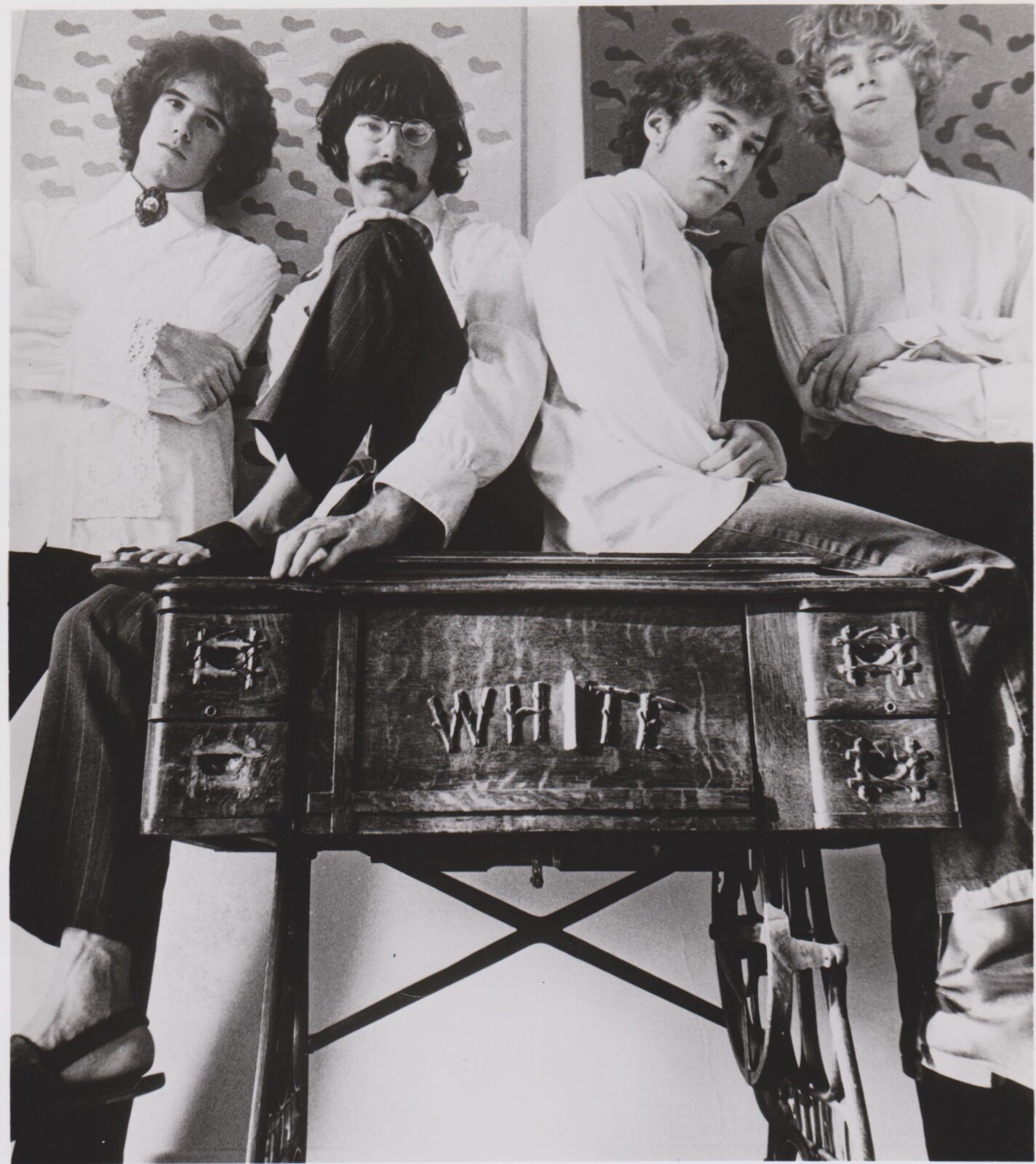
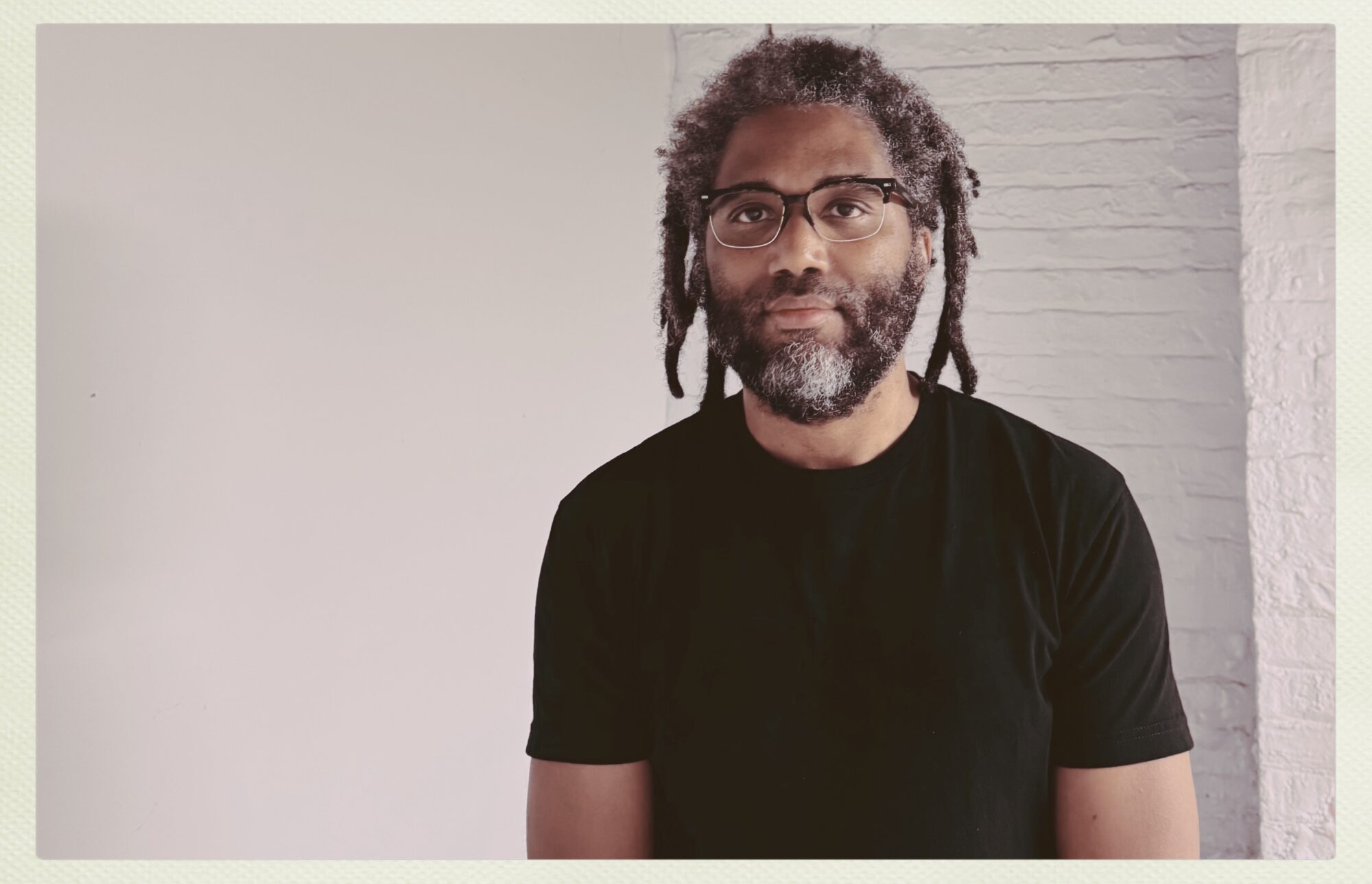
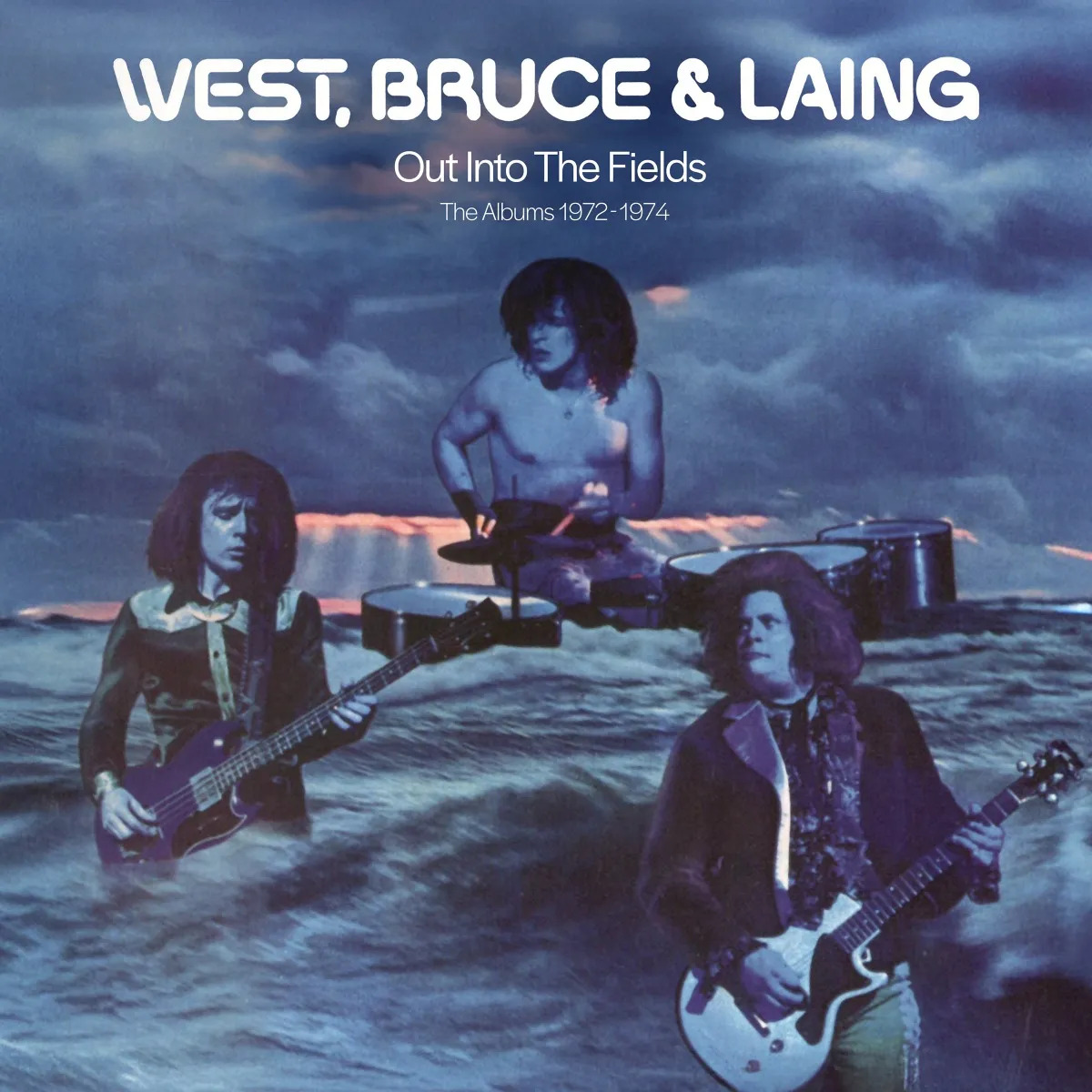

Thank you Klemen